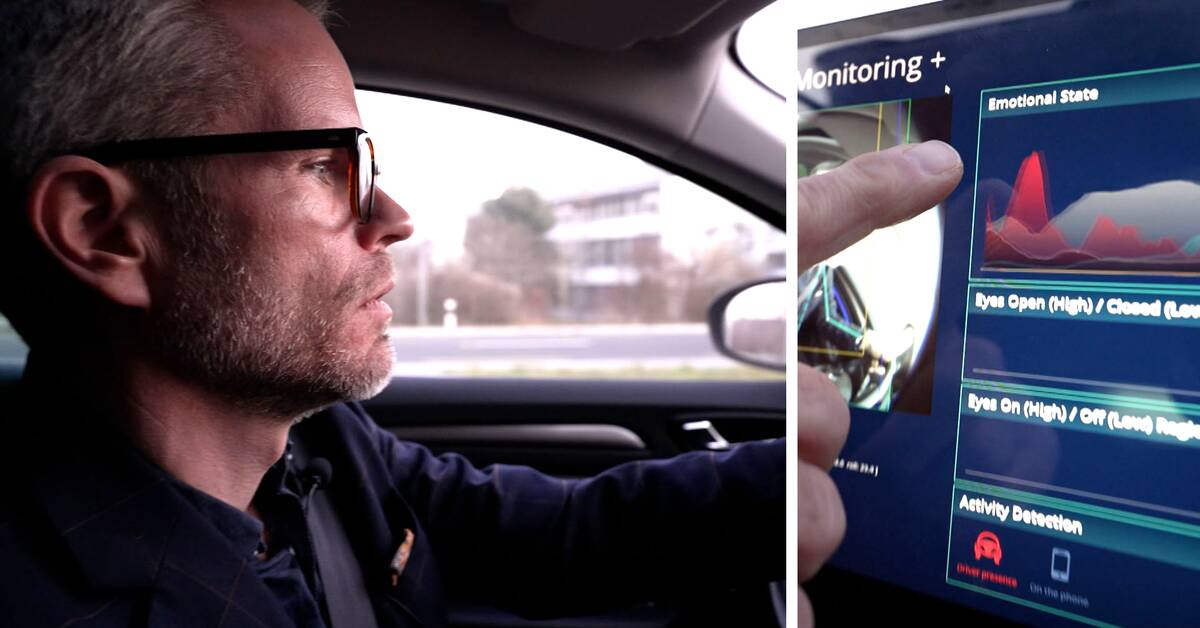- When we move towards more self-driving, we need to know what the person in the car is doing, says Marc-Antoine Cloux, software engineer at Nviso in Switzerland, who develops systems for such camera-based surveillance in the car.
The automotive industry calls it the "Driver Monitoring System" and aims to increase traffic safety.
To begin with, by registering where the gaze is and whether the driver seems alert or is falling asleep.
- If you send messages with your phone while driving, the car will detect it and maybe slow down or make a sound, explains Ola Broström, head of research at Veoneer, which develops safety systems for the car industry.
Personal algorithm
But that's just the first step.
With the help of artificial intelligence, the car can learn your driving style, how you usually are as a driver, and notice if everything is not right behind the wheel.
For example, if you have not looked in the rearview mirror as often as you usually do.
- The AI can train on you, and make a personal algorithm where the car discovers that something is wrong with how you drive.
How long before we have this on cars we buy in Sweden?
- It will go fast, within a few years this will be found in almost all cars.
"In level 3, the car takes responsibility"
In the USA, it is in some places allowed to drop the steering wheel completely if you have a car that is ready for it, which can handle the higher level of self-driving, "level 3".
But here in Europe, too, it is underway.
Mercedes recently received a permit in Germany for such cars to drive independently on the Autobahn at speeds below 60 km / h, for example when queuing.
- When the car then enters Level 3, the car takes responsibility.
But the responsibility must also be able to be transferred back to the driver in a short time.
This technique for understanding that the driver is ready for it, and then has really taken control again, is then critical.
Trying to read emotions
Another step in driver monitoring is to switch on emotional recognition, where the AI, based on the driver's facial expression, tries to read emotions.
For example, to draw attention to dangerous traffic.
But Ola Broström is doubtful that it will be used for road safety.
- It may be able to be used to adapt the music or so, but there are so many limitations with how to interpret facial expressions and understand what emotions are behind it.

